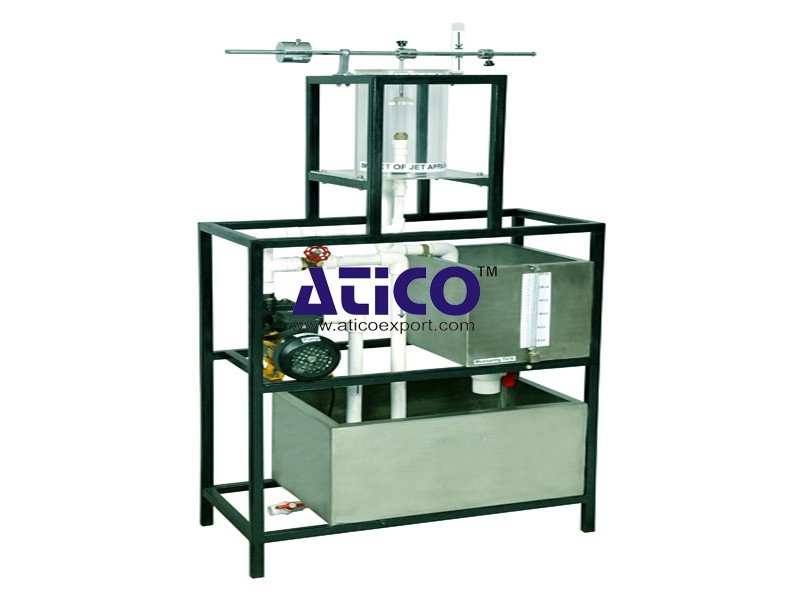Drag Co Efficient Apparatus
Categories:Drag Co Efficient Apparatus The apparatus has been designed to introduce students to the fundamental characteristics of the behavior of the particle system, in particulars the relationship between the...
Product
Description
Drag Co Efficient Apparatus
The apparatus has been designed to introduce students to the fundamental characteristics of the behavior of the particle system, in particulars the relationship between the drag coefficient of falling particles and their Reynolds number value. Particles covering a range of sizes and densities are supplied and the experiments are conducted by allowing single particles to fall through a number of different liquids contained in vertical glass tube. The rate of fall of the particle is determined by timing their passage between two marks on the walls of the glass tubes. Observation of particle movement is aided by the provision of a shielded fluorescent tube light mounted on the backboard. Particles can be removed from the bottom of the tubes without the necessity of draining the liquid. A valve system is provided at the bottom of each tube to allow the particles to be removed with the minimum loss of liquid.
Experiment:
- To measure the drag co-efficient
- To plot the graph between drag co-efficient vs. Modified Reynolds number
- To study the motion of a solid particle through a liquid
Utilities Required:
- Electricity supply 100 watts, 220 , 1 phase
- Floor Area 0.75 m x 1.5 m
- Liquids of different viscosity
quick overview :
Drag Co Efficient Apparatus
The apparatus has been designed to introduce students to the fundamental characteristics of the behavior of the particle system, in particulars the relationship between the drag coefficient of falling particles and their Reynolds number value. Particles covering a range of sizes and densities are supplied and the experiments are conducted by allowing single particles to fall through a number of different liquids contained in vertical glass tube. The rate of fall of the particle is determined by timing their passage between two marks on the walls of the glass tubes. Observation of particle movement is aided by the provision of a shielded fluorescent tube light mounted on the backboard. Particles can be removed from the bottom of the tubes without the necessity of draining the liquid. A valve system is provided at the bottom of each tube to allow the particles to be removed with the minimum loss of liquid.
Experiment:
- To measure the drag co-efficient
- To plot the graph between drag co-efficient vs. Modified Reynolds number
- To study the motion of a solid particle through a liquid
Utilities Required:
- Electricity supply 100 watts, 220 , 1 phase
- Floor Area 0.75 m x 1.5 m
- Liquids of different viscosity
Product
Reviews
add Review
reviews
No Review Yet.















Product
Reviews
add Review
reviews
No Review Yet.